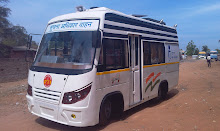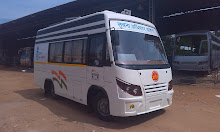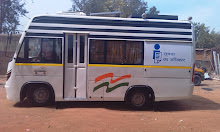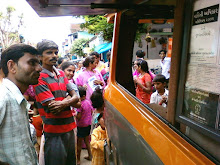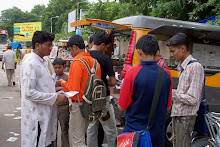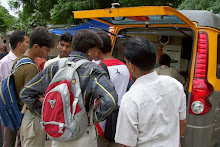The Daily Star: Bangladesh: Wednesday,
February 15, 2017.
This
beautiful rhyme by poet Jotindra Mohan Bagchi famously captures the Bengali
sentiment for bokul phul, a very small sweet-smelling white flower. The words
vividly describe the poignant feelings of a visually impaired woman who is
being escorted by her sister-in-law for a walk in the garden. She implores her
companion to let her tread softly over the fallen flowers under her feet and
asks if they are indeed bokul phul, heralding the imminent arrival of spring.
In fact, the bokul tree (Mimusops Elengi) has a hallowed place in the Bengali
mind.
Readers may
legitimately ask why I am evoking poetry in an RTI column. I would only request
their indulgence to allow me to draw upon a personal experience in this regard.
A bokul tree
stood in front of our house for over 40 years and covered the ground below with
sweet-smelling flowers every spring. It was planted by my wife when we built
our first house together in the Banani area of Dhaka city. Her love for bokul
flowers was so deep that she insisted on buying a small bokul plant before the
ground-breaking ceremony. My father helped her plant it in front of our
boundary wall.
From that day
in 1974 till early June 2016, our bokul tree grew steadily and spread its wide
canopy over the sidewalk in front of our house. It provided shade to weary
passersby during the day and silently showered the path with flowers during the
night. Small girls picked them up every morning and turned them into garlands
to give to their loved ones. Since the death of my wife in October 2013, I
often watched this beautiful ritual every day and remembered the time when she
would play with a handful of bokul phul brought to her in the morning during
her illness.
But then came
the spate of road building and other improvement activities in our
neighbourhood, undertaken by the newly installed Dhaka North City Corporation
(DNCC) authorities. Streets everywhere were dug up, but people took their
suffering in good spirit, hoping for improved traffic soon. I too rejoiced at
the prospect of better roads. However, I was soon filled with trepidation when
I saw many trees being felled in the process. I shuddered at the thought of
losing my bokul tree.
I knew that
development may require some destruction first, but was hoping that things will
happen systematically, based on clear policy, rules and regulations. I hoped
that this would be particularly true for trees, many of which had grown big and
beautiful over the years, including my wife's bokul tree. If the rules were
applied evenly, I thought, I should be prepared to accept whatever happened.
But while the
trees on some streets were being chopped down ruthlessly, those on other
streets were spared. The reason for this distinction was not communicated. In
some places, the trees were cut before drains and sidewalks were built on both
sides of the street. In other places, the sidewalks were built without felling
the trees as the drain pipes were dug into the middle of the road. I was hoping
that this would happen on my street too.
To know more,
I decided to use the Right to Information Act 2009. I sent an RTI application
on May 3, 2016, by registered mail to the Designated Officer (DO) of DNCC
asking for a copy of any guidelines being followed for the tree-felling
activities in the Banani area and a copy of any specific decision taken in this
regard and provided to the contractors, and finally, a copy of rules and
regulations for felling of trees anywhere in Dhaka city.
Unfortunately,
there was no response within 20 working days, as stipulated in the RTI Act. So,
as per law, I appealed to the appellate authority, who happened to be the Mayor
of DNCC. He too did not respond within the stipulated 15 working days. I then
complained, as per law, to the Information Commission. Two months had passed
since my first letter.
Meanwhile,
one morning in early June 2016, work men arrived on my street and began sawing
down my bokul tree. I was told that this was necessary as the side-walk would
be built on the drain which could only be dug after removing the trees. I
called the mayor right away, who told me that there was nothing he could do as
everything was being done on basis of decisions carefully taken.
There was no
point in asking whether there were any written records of the decisions, as it
was already too late. My bokul tree and its companion mahogany tree were gone.
However, about seven other trees on my street were spared. These surviving
trees stand to this day to my great joy, with the sidewalks hugging them all
around. Again, no reason was provided for the distinction.
I immediately
sent a second RTI application, asking for the basis of such action.
Unfortunately, no reply came within the stipulated period of 20 working days.
This time, without making another futile attempt to appeal to the mayor, I sent
a second complaint straight to the Information Commission, which promptly
applied the rule and rejected the complaint, stating that I should have made an
appeal first to the DNCC.
About my
first complaint to the Commission, I was called to a hearing on October 24,
2016: more than five months since my initial letter. The DO of the DNCC was
present together with his lawyer. Both denied having received my first
application or the appeal, though they were sent by registered mail. However,
they acknowledged that they had received the second application, for which a
response was sent on September 8, 2016. The response contained a copy of an
office order from 2008 relating to removal of trees which are affected by storm
or are old or dead. The order required the formation of a committee composed of
five persons from relevant government offices who would take the necessary
decisions. It was accompanied by a circular dated March 7, 2016 relating to
removal of trees felled or destroyed by a recent storm “in accordance with
traditional practice”.
When the
commissioners asked the DO if such a committee was formed, the DO simply said
that he did not get any feedback from the concerned department. The Commission
then decided to hold another hearing a month later, on November 20, 2016, in
which the official from the concerned department would be summoned. However,
the latter failed to appear at the hearing and sent only his lawyers. As the
matter could not be taken any further, the Commission simply took the decision
that the DNCC must respond to my RTI application in writing, even if to say
that they had no information to provide.
I got a
letter from the DNCC within a few days, basically saying that they had no
guidelines for felling of trees and no specific decisions were taken to cut the
trees on my street and no written instructions were given to the contractors
for this purpose. The matter ended there in effect.
So, what was
the result of my RTI intervention? Nil, I am afraid. My beloved bokul tree was
gone. The Information Commission was simply focused on process: ensuring that
the DNCC responded to my RTI application, even if to say that they had no
information to provide. It took no action on the fact that the DNCC failed to
respond to my RTI application or the appeal in the first place, even though the
law clearly provides for punitive and other measures. The DNCC got away
unscathed by denying that it ever received my application or the appeal, even
though I produced evidence that they were sent by registered mail.
That the RTI
law was enacted primarily to promote transparency and accountability of public
offices was lost in the Information Commission decision. As for the DNCC, one
wonders if anybody, other than the few officials directly involved in the
process, was made aware about the existence of the law and their responsibility
under it for transparency and accountability to the public. If it continues
like this, can the objectives of RTI ever be achieved?
And finally,
will the mystery of why my wife's bokul tree got the axe while most of the
other trees on my street thankfully remained standing ever be solved?
The writer is the Chairman of Research Initiatives, Bangladesh (RIB).
The writer is the Chairman of Research Initiatives, Bangladesh (RIB).











